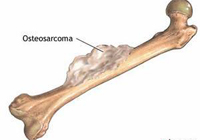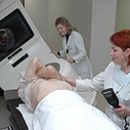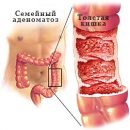What are the types of bone and cartilage tumors? Why they arise? What factors affect the development of bone and cartilage tumors? Read in this article.
Content
Types of bone and cartilage tumors
Distinguish primary and metastatic (secondary) bone and cartilage tumors.
Primary tumors arise directly from the bone or cartilage, and metastatic lesions are observed when the distribution of other tumors (for example, lung cancer, breast, prostate gland, etc.) In the bone.
Basy and cartilaginous tissue tumors include: osteoma, osteoid-osteoma, osteoblastoma, osteochondrome, hemangioma and chondromixoid fibroma.
These tumors do not metastasize and, as a rule, are not dangerous for the life of the patient. Operational tumor removal is the only method of treatment, as a result of which patients are fully recovered.
Osteosarcoma (osteogenic sarcoma) is the most common primary malignant dice tumor (35%). The most often osteosarcoma is revealed between the ages of 10 and 30, however, in 10% of cases, the tumor is diagnosed at the age of 60-70 years. At middle age, osteosarcoma occurs very rarely. Men get sick more than women. Osteosarcoma more often affects the upper and lower limbs, as well as the pelvic bones.
 Chondrosarcoma develops from cartilage cells and ranks second among malignant tumors of bone and cartilage tissues (26%). It is rarely detected in persons under the age of 20. After 20 years, the risk of chondrosarcoma is rising up to 75 years. The tumor occurs with the same frequency of men and women. Chondrosarcoma is usually localized on the upper and lower limbs and in the pelvis, but can also strike ribs and other bones. Sometimes Chondrosarcoma develops as a result of malignant rebirth of a benign tumor osteochondroma.
Chondrosarcoma develops from cartilage cells and ranks second among malignant tumors of bone and cartilage tissues (26%). It is rarely detected in persons under the age of 20. After 20 years, the risk of chondrosarcoma is rising up to 75 years. The tumor occurs with the same frequency of men and women. Chondrosarcoma is usually localized on the upper and lower limbs and in the pelvis, but can also strike ribs and other bones. Sometimes Chondrosarcoma develops as a result of malignant rebirth of a benign tumor osteochondroma.
Sarcoma Jinga Named in honor of the doctor described her in 1921. Most often, the tumor occurs in the bone, however, in 10% of cases, the Sarcoma of Yinga can be found in other tissues and organs. It ranks third in frequency among malignant bone tumors. The most often amazed long tubular bones of the upper and lower extremities, less – Bones pelvis and other bones. Sarkom Jinga is most often diagnosed in children and adolescents and rarely – People over 30 years old.
Fibrosarcoma and malignant fibrous histiocyte (6%) develop from the so-called soft tissues to which binders, tendons, adipose tissue and muscle.
Usually these tumors are detected in the middle and old age. Upper and lower limbs and jaw – The most frequent localization of the fibrosarcoma and malignant fibrous histiocyte.
Giant Cathobe Tumor may be both benign and malignant. Most often found a benign version of the tumor. 10% of giant bones tumors take place malignant, which is expressed in metastasis in other parts of the body, as well as frequent local recurrence after operational removal. Usually arise on the upper and lower limbs in young adults and middle-aged people.
Chordoma occurs on the basis of a skull or vertebrae. Surgical intervention and application of radiation therapy are complicated due to the close location of the spinal cord and vital nerves. After the treatment, patients must be under thorough observation, since repeated growth (relapse) of the tumor, after many years.
Nephodgkinsky lymphomas (lymphosarcomes) usually develop in lymph nodes, but sometimes they can primarily hit the bone.
Multiple myeloma arises from bone marrow plasma cells and does not apply to primary bone tumors. Sometimes the process is localized only in one bone, but a multiple bone lesion is usually observed.
The occurrence of malignant bone and cartilage tumors
Primary malignant tumors of bone and cartilage tissue are less than 0.2% of all forms of cancer. The maximum incidence rate is registered in the age group of 75-79 years. The risk of malignant tumors of bone and cartilage tissue over the course of life is 0.12%.
Risk factors for the development of malignant tumors of bone and cartilage tissue
With different forms of cancer can be their risk factors. The presence of one or more risk factors does not mean the mandatory development of the tumor. So, in most patients with tumors of bones and cartilage there are no obvious risk factors.
Below are separate factors that increase the likelihood of the development of malignant tumors of bone and cartilage tissues.
Inherited genes. In some patients with osteosarcoma, the occurrence of the tumor can be explained by the presence of hereditary factors. Lie Fraumeny syndrome predisposes to the development of various tumors, including breast cancer, brain tumors, osteosarcoma and other types of sarcoma.
Retinoblastoma is a rare eye tumor in children. 6-10% by retinoblast due to hereditary factors. In children with a hereditary form of a tumor, the risk of development of osteosarcoma. Conducted radiation therapy about the retinoblastoma also increases the risk of osteosarcoma bones of the skull.
Pedgety's disease may affect one or more bones and is considered to be prepanced diseases. This disease occurs most often in people over 50 years. During the disease, the dice is thicken, but become fragile, which can lead to fractures. In 5-10% of cases against the background of severe Pedge's disease, bone sarcoma develop (usually osteosarcomas).
Multiple exostosis (bone expanding) increase the risk of osteosarcoma.
Multiple osteochondromes Formed bone and cartilage tissues.
Some people inherit an increased frequency of development of multiple osteochondr, which increases the risk of osteosarcoma.
Multiple enchondroms develop from cartilage tissue and predispose to increased risk of Hondrosarcoma education, although this risk and insignificant.
Radiation can lead to increasing risk of bone tumors. In this case, ordinary x-ray examination does not represent danger to humans. On the other hand, high doses of irradiation in the treatment of other tumors can increase the risk of malignant bone tumors. So, radiation therapy at a young age, as well as a dose of over 60 grades increase the risk of bone tumors. The effects of radioactive substances (radium and strontium) also increases the risk of bone tumors, as they accumulate in bone tissue. Non-ionizing radiation in the form of microwave and electromagnetic fields arising from power lines, mobile (cellular) phones and household appliances is not associated with the risk of bone tumors.









